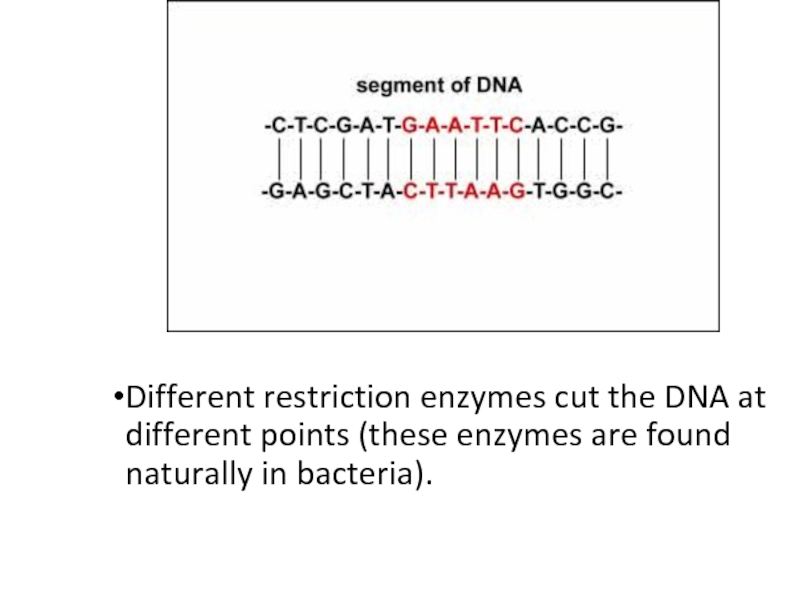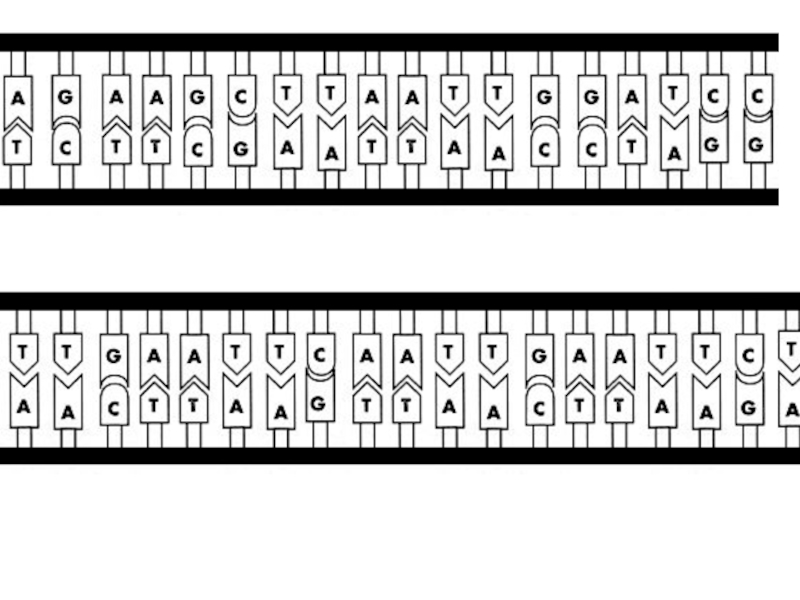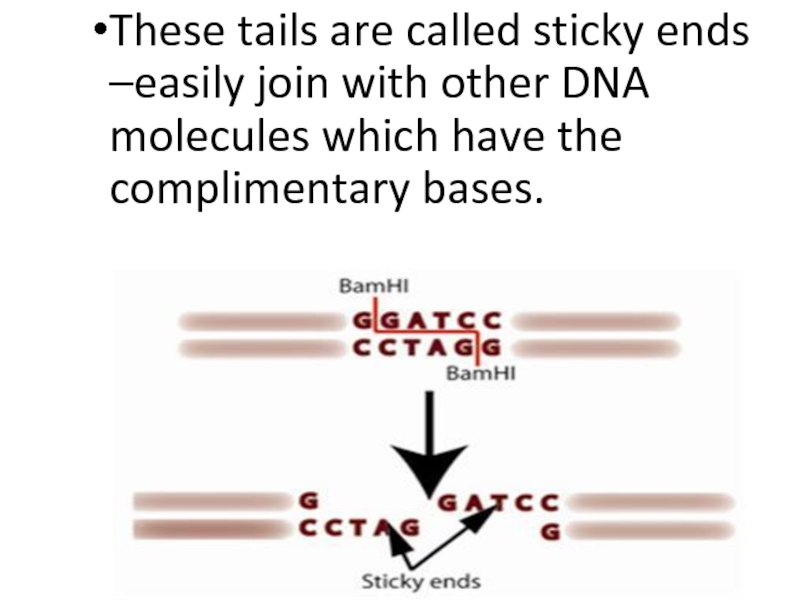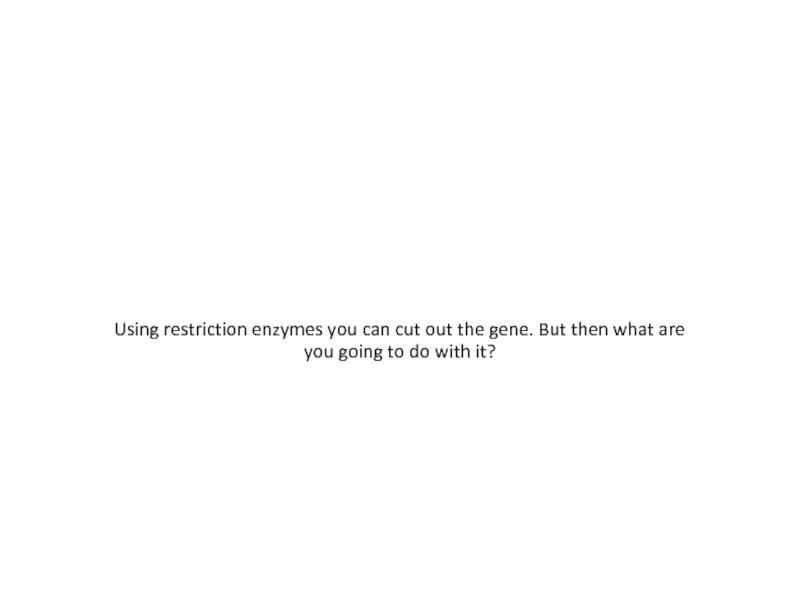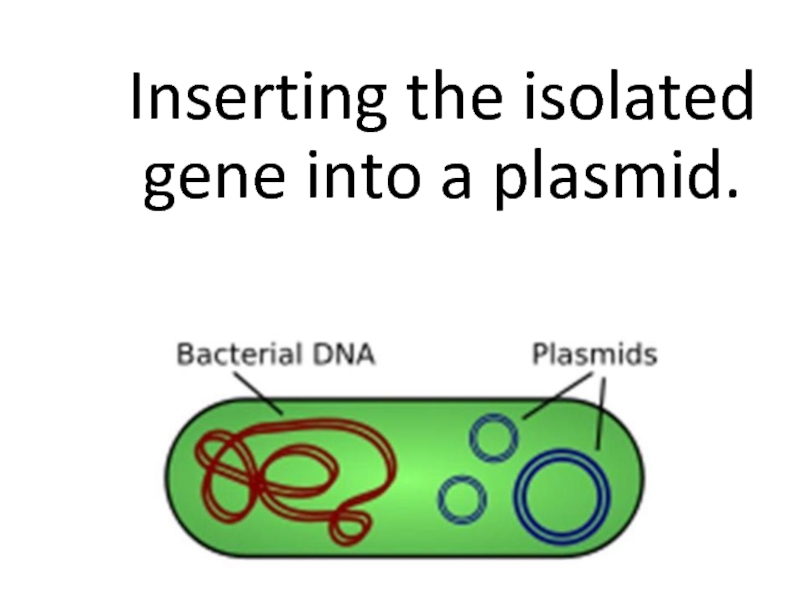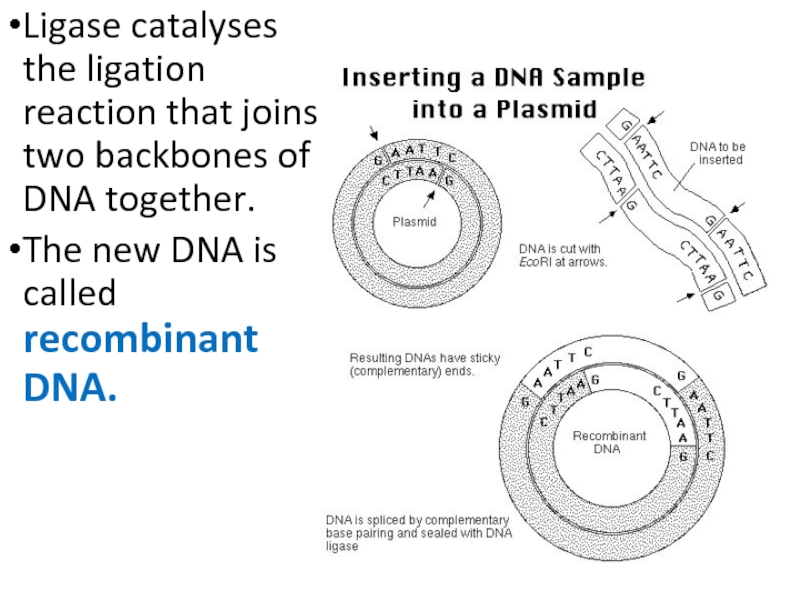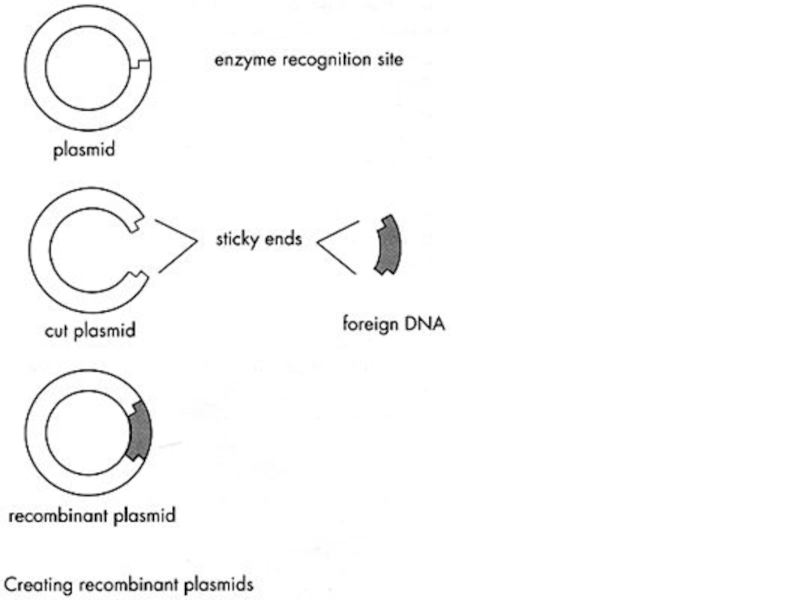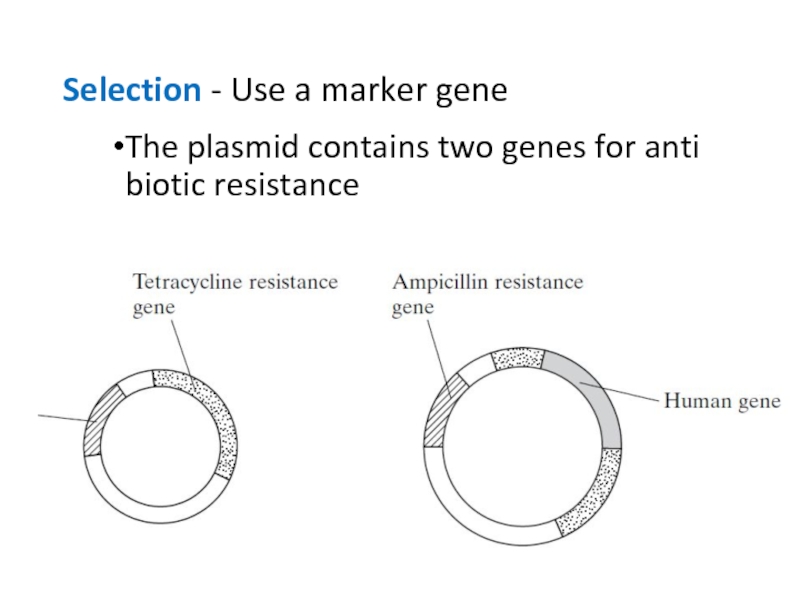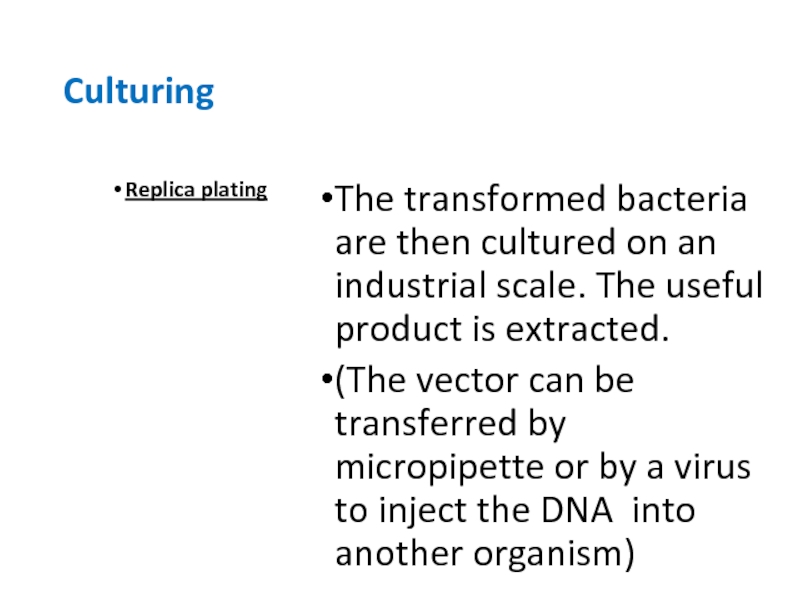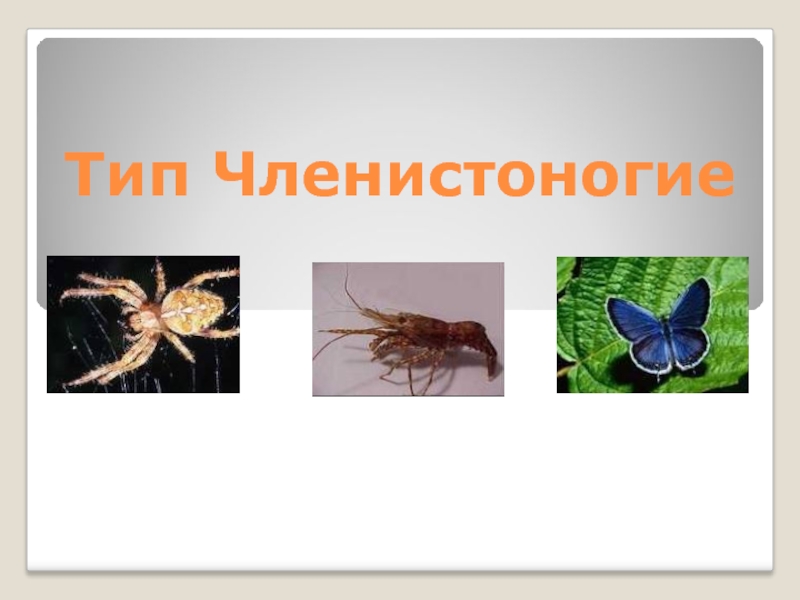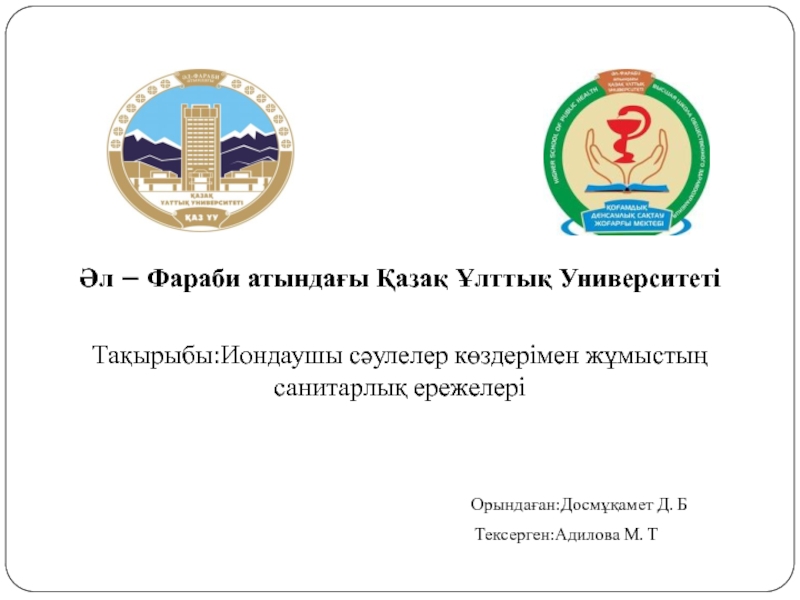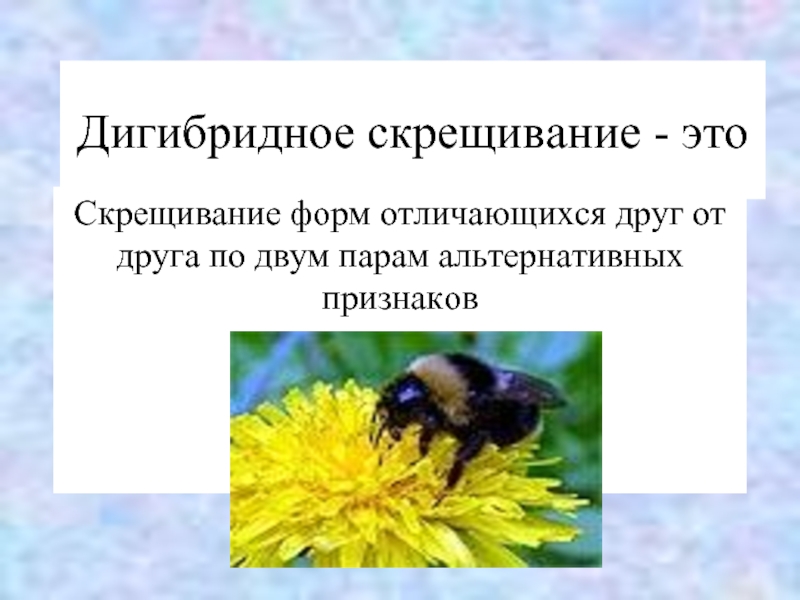- Главная
- Разное
- Дизайн
- Бизнес и предпринимательство
- Аналитика
- Образование
- Развлечения
- Красота и здоровье
- Финансы
- Государство
- Путешествия
- Спорт
- Недвижимость
- Армия
- Графика
- Культурология
- Еда и кулинария
- Лингвистика
- Английский язык
- Астрономия
- Алгебра
- Биология
- География
- Детские презентации
- Информатика
- История
- Литература
- Маркетинг
- Математика
- Медицина
- Менеджмент
- Музыка
- МХК
- Немецкий язык
- ОБЖ
- Обществознание
- Окружающий мир
- Педагогика
- Русский язык
- Технология
- Физика
- Философия
- Химия
- Шаблоны, картинки для презентаций
- Экология
- Экономика
- Юриспруденция
Genetic enginnering презентация
Содержание
- 1. Genetic enginnering
- 2. The essence of genetic engineering
- 3. Learning objective explain the essence of genetic engineering
- 4. Success criteria 1.Gives the concept of
- 5. Terminology Restriction enzyme, DNA ligase, DNA
- 6. Production of GMOs is a multistage process
- 9. You can extract and produce human insulin
- 10. Restriction - Cutting up the DNA We
- 11. Enzymes can be used that cut the
- 12. Restriction endonucleases cut DNA at specific base sequences (eg) AATT
- 13. The enzyme cuts the DNA backbone twice,
- 14. Different restriction enzymes cut the DNA
- 15. Different restriction enzymes produce different sticky ends
- 17. These tails are called sticky ends –easily
- 18. You will need to cut the
- 19. Using restriction enzymes you can cut
- 20. Inserting the isolated gene into a plasmid.
- 21. Ligation – the gene is inserted into
- 23. The same restriction enzymes used to
- 24. Once DNA and the plasmid have
- 25. The broken plasmid has sticky ends
- 26. The gene is inserted into the
- 27. Ligase catalyses the ligation reaction that joins
- 30. Transformation: Plasmids containing the donar gene must
- 31. Transformation is not very efficient. You
- 32. Selection - Use a marker gene The plasmid contains two genes for anti biotic resistance
- 33. Selection - Use a marker gene One is broken by the inserted gene.
- 34. The plasmids are taken up by the
- 37. The bacteria are grown on culture plates,
- 38. Culturing Replica plating The transformed bacteria are
- 39. In vivo gene cloning - These
- 40. Advantages The production of useful organisms with new features.
- 41. Disadvantages Inserted genes may have unexpected harmful effects.
Слайд 4Success criteria
1.Gives the concept of genetic engineering.
2. Describes the stages
3. Explains the importance of genetic engineering
Слайд 5Terminology
Restriction enzyme, DNA ligase, DNA polymerase, reverse transcriptase
Genetic engineering
Recombinant DNA
Insulin
Vector,
Base pairing, sticky ends, DNA stand,
Host cell, transformed, mRNA, complementary DNA – cDNA
Слайд 6Production of GMOs is a multistage process which can be summarized
1. identification of the gene interest;
2. isolation of the gene of interest;
3. amplifying the gene to produce many copies;
4. associating the gene with an appropriate promoter and poly A sequence and insertion into plasmids;
5. multiplying the plasmid in bacteria and recovering the cloned construct for injection;
6. transference of the construct into the recipient tissue, usually fertilized eggs;
7. integration of gene into recipient genome;
8. expression of gene in recipient genome; and
9. inheritance of gene through further generations.
Слайд 9You can extract and produce human insulin in bacteria:
1.Get a human
2.Use a restriction enzyme to cut the insulin gene out
3.Use the same restriction enzyme to cut the plasmid out from the bacterium
4.Mix the plasmid and DNA fragment with the enzyme DNA ligase to produce recombinant DNA
5.Mix the plasmid with e-coli (bacteria)
6.Open the pores of the bacteria, by applying temporary heat or an electric shock to allow plasmid to enter
7.The bacteria can grow in huge numbers in a fermenter
Слайд 11Enzymes can be used that cut the DNA strand isolating the
Слайд 13The enzyme cuts the DNA backbone twice, therefore, the site "reads"
Слайд 14
Different restriction enzymes cut the DNA at different points (these enzymes
Слайд 17These tails are called sticky ends –easily join with other DNA
Слайд 19
Using restriction enzymes you can cut out the gene. But then
Слайд 21Ligation – the gene is inserted into a vector.
The isolated
Слайд 25
The broken plasmid has sticky ends that are complimentary to the
The donor gene will easily combine with the complimentary sticky ends of the plasmid.
Слайд 27Ligase catalyses the ligation reaction that joins two backbones of DNA
The new DNA is called recombinant DNA.
Слайд 30Transformation:
Plasmids containing the donar gene must now be transferred into the
Слайд 31
Transformation is not very efficient. You now need to identify and
Слайд 34The plasmids are taken up by the bacteria and replica plating
Слайд 37The bacteria are grown on culture plates, where they form visible
They can be transferred to identical positions on plates containing ampicillin and then tetracycline. The bacteria with the ‘new’ gene will be able to grow on ampicillin, but not tetracycline. The required transformed bacteria can be identified, ready to be grown on a large scale
Слайд 38Culturing
Replica plating
The transformed bacteria are then cultured on an industrial scale.
(The vector can be transferred by micropipette or by a virus to inject the DNA into another organism)













